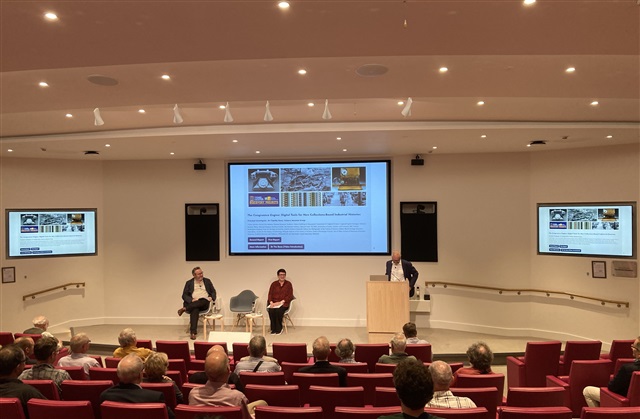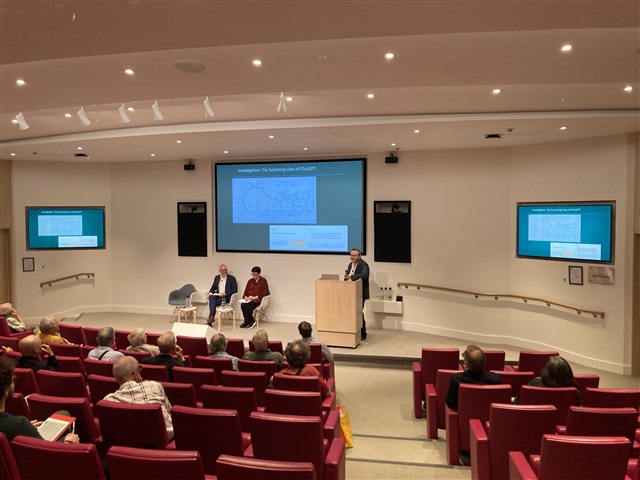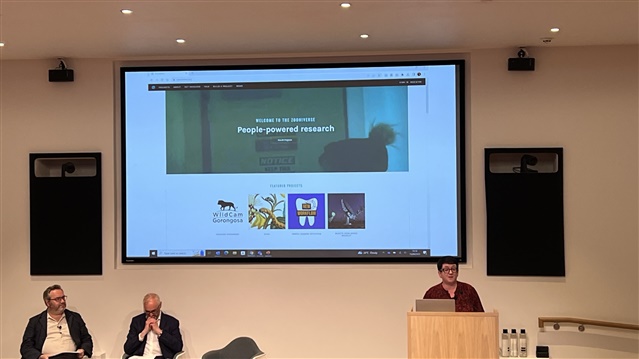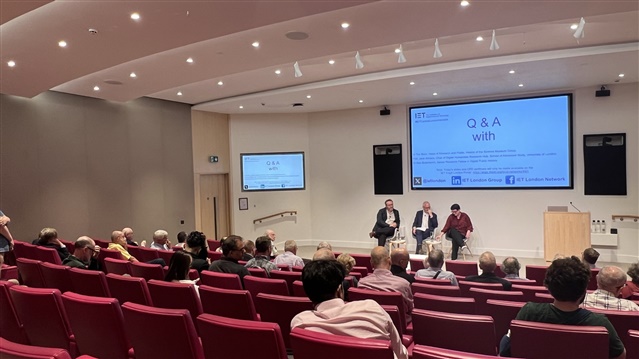Three fantastic and passionate speakers presented on the Congruence Engine Project, a research project to demonstrate how museum collections' can be linked, expanded and elucidated by enabling the linking of multiple information sources. Dr Tim Boon (Head of Research & Public History for the Science Museum Group), Dr Alex Butterworth (Senior Research Fellow in Digital Public History at the Science Museum), and Professor Jane Winters (Chair of Digital Humanities and Director of the Digital Humanities Research Hub at the School of Advanced Study, University of London) each talked about differing aspects of the Congruence Engine project.
The Congruence Engine project is focussed on textiles, energy, and communications as exemplar topics for expanding and linking collections, however, the talks tended to use the textile collections and their fascinating national and international connections as the primary discussion points.
Dr Boon lead the talks with an overview of the reasoning behind the project, it's aim, and equivalent efforts, but also the limits on what the project is intended to achieve. While the aim is not to move this beyond a proof of concept, the effort in linking catalogues to de-silo the UK museums' collections and the technology developed to implement this forms a great base to build on. Examples of the paper collection cards and limited descriptions in the catalogues (Cotton samples in a glass case!!!) demonstrate how expanding the information available for each item, without re-cataloguing can have a massive effect in providing better context for items.

Dr Butterworth followed that up with a fascinating and more detailed description of some of the technology that is used, the items they've input and the many many links that can be used, from geographic and historical images, to text generated from handwritten documents and accounting data. His passion for the subject clearly shone through. The mix of explanations of the text extraction from historical documents and information gathered by image analysis to enable combining multiple images, of one subject, to give greater historical context of that subject (architectural in the examples used) was brilliant. Focussing on Bradford and it's links to cotton production was surprisingly interesting (I've neither been to Bradford or had much interest in cotton production). Finally, diving deeper into the representation of the links between individual items and how using dimensionally reduced plots of multimodal data (keywords in this case) can show meaningful associations that are not originally obvious. There is so much more that was covered, but for that, you would have to have been there...

Last but not least Prof Winters focussed much of her talk on the idea of the Social Machine. Starting off with the question of people vs machine or people and machine. The obvious answer was the latter given the need to dig into the significance of the items and, therefore, when should people be brought in to curate, not if. The social machine concept was introduced with the example of Wikipedia and the academic research of the concept since Tim Berners-Lee wrote about it. The Congruence Machine is a social machine, with considerations around what digital, social, and historical insights have been generated, rather than just expanding the availability of knowledge about a particular topic. Using the power of digital storytelling that can be created as a start, by a linked database of collections, images, and text, that a search engine just can't match. Alternative, equivalent databases (Minett Stories) and their impact on local communities were discussed.

The Q&A session was limited due to the depth of the 3 talks that had already been given, but the audience was obviously interested in how ensuring that data from old electronic sources (excel through to old audio tracks) could be handled and how curating of services would be possible given that so much of our current economy has shifted from a production and hardware economy to an online and service economy.

Another example of how a topic I knew nothing about and wouldn't have even thought to be interested in was shown to be so much more interesting and involve a huge amount of engineering and system planning behind it all. Love it.
-

David Tabor
-
Cancel
-
Vote Up
0
Vote Down
-
-
Sign in to reply
-
More
-
Cancel
Comment-

David Tabor
-
Cancel
-
Vote Up
0
Vote Down
-
-
Sign in to reply
-
More
-
Cancel
Children